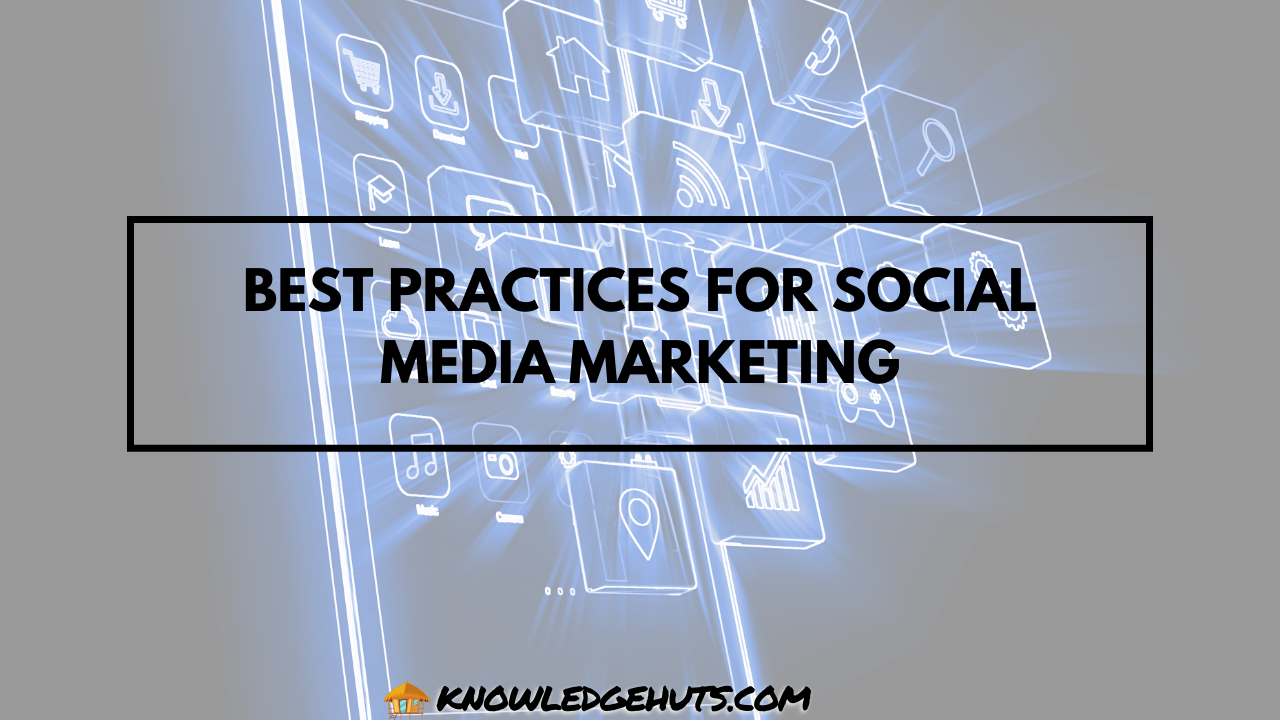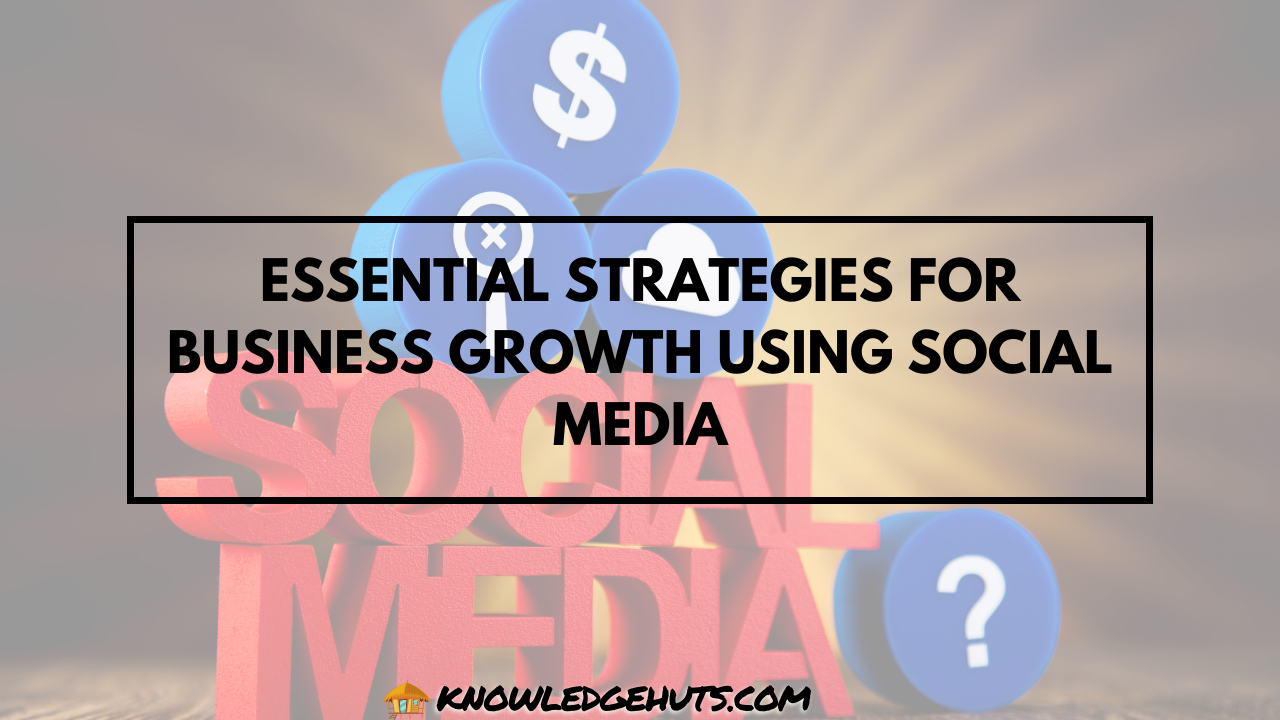In today’s digital landscape, social media has become an indispensable tool for businesses of all sizes. With billions of users across platforms like Facebook, Instagram, Twitter, LinkedIn, and TikTok, social media offers unparalleled opportunities to connect with your audience, build brand awareness, and drive sales. However, success in social media marketing requires more than just posting content regularly; it demands a strategic approach that aligns with your business goals.
This comprehensive guide explores the best practices for social media marketing, helping you to navigate the complexities of various platforms, engage your audience effectively, and measure your success.
Understanding the Importance of Social Media Marketing
Social media marketing involves using social platforms to promote your brand, products, or services. It’s about creating content tailored to the context of each platform, driving engagement, and building relationships with your audience.
Why Social Media Marketing Matters
- Increased Brand Awareness: Social media platforms are where your customers spend a significant amount of their time. By maintaining a strong presence, you can keep your brand top-of-mind.
- Customer Engagement: Social media allows for direct interaction with your audience, fostering relationships and building community.
- Lead Generation: With the right strategies, social media can be a powerful tool for generating leads and driving sales.
- Customer Insights: Social media analytics offer deep insights into customer behavior, preferences, and trends, allowing you to refine your marketing strategies.
Quote: “Social media is not just an activity; it is an investment of valuable time and resources. Surround yourself with people who not just support you but inform your thinking about ways to WOW your online presence.” — Sean Gardner, Forbes Top 50 Social Media Power Influencers
Setting Clear Goals and Objectives
Before diving into social media marketing, it’s crucial to define clear goals and objectives. These will guide your strategy and help you measure success.
Defining SMART Goals
Your social media goals should be SMART: Specific, Measurable, Achievable, Relevant, and Time-bound.
- Specific: Clearly define what you want to achieve. Instead of a vague goal like “increase engagement,” set a specific goal like “increase Instagram post engagement by 20% in three months.”
- Measurable: Your goals should be quantifiable. Use metrics like follower growth, engagement rate, click-through rate (CTR), and conversion rate to measure success.
- Achievable: Set realistic goals that are attainable given your resources and capabilities.
- Relevant: Ensure your goals align with your overall business objectives.
- Time-bound: Set a deadline for achieving your goals to maintain focus and momentum.
Example of SMART Goals:
| Goal Description | Specificity | Measurability | Achievability | Relevance | Time-Bound |
|---|---|---|---|---|---|
| Increase Instagram followers by 15% | High | Follower count | Yes | Yes | 3 months |
| Boost website traffic from social media | High | Google Analytics data | Yes | Yes | 6 months |
| Improve Facebook ad CTR by 10% | High | CTR metric | Yes | Yes | 2 months |
Aligning Goals with Business Objectives
Your social media goals should directly support your broader business objectives. For example, if your business goal is to increase online sales, your social media goal might be to drive more traffic to your e-commerce site through targeted ads and promotions.
Quote: “Social media goals should be directly aligned with your business objectives. Without this alignment, you’re just engaging in random acts of social.” — Jay Baer, Digital Marketing Strategist
Knowing Your Audience
Understanding your audience is fundamental to effective social media marketing. Without this knowledge, your efforts may not resonate, leading to low engagement and missed opportunities.
Creating Detailed Buyer Personas
Buyer personas are semi-fictional representations of your ideal customers based on real data and research. They help you tailor your content and messaging to meet the needs and preferences of your audience.
Steps to Create Buyer Personas:
- Research: Collect data on your current customers through surveys, interviews, and analytics. Look for common characteristics such as age, gender, location, job role, and interests.
- Identify Pain Points: Understand the challenges and problems your audience faces. How can your product or service solve these issues?
- Define Goals and Motivations: What drives your audience? What are their goals, and how can you help them achieve these?
- Determine Preferred Platforms: Identify where your audience spends their time online. Are they more active on Instagram, LinkedIn, or Twitter?
Example of a Buyer Persona:
| Persona Name | Demographics | Pain Points | Goals and Motivations | Preferred Platforms |
|---|---|---|---|---|
| Sarah, 30 | Female, Marketing Manager | Struggles with content creation efficiency | Wants to streamline content creation | LinkedIn, Twitter |
| John, 45 | Male, Small Business Owner | Needs cost-effective marketing solutions | Looking to grow his business’s online presence | Facebook, Instagram |
Analyzing Audience Behavior
Use social media analytics tools to monitor and analyze your audience’s behavior. Understanding when your audience is most active, what type of content they engage with, and how they interact with your brand will help you fine-tune your strategy.
Tools for Audience Analysis:
- Facebook Insights: Provides data on page views, post reach, and engagement metrics.
- Instagram Analytics: Offers insights into follower growth, post-performance, and audience demographics.
- Twitter Analytics: Shows data on tweet impressions, engagement rates, and follower growth.
- LinkedIn Analytics: Tracks post performance, follower demographics, and engagement.
Crafting a Content Strategy
Your content strategy is the backbone of your social media marketing efforts. It involves planning, creating, and distributing content that resonates with your audience and supports your goals.
Developing a Content Calendar
A content calendar helps you plan and organize your posts in advance, ensuring consistency and relevance. It also allows you to align your content with key dates, holidays, and events.
How to Create a Content Calendar:
- Plan Content Themes: Decide on the main themes or topics you’ll cover each month. This could include industry news, product launches, or educational content.
- Schedule Posts: Determine the best times to post based on when your audience is most active. Use analytics to identify peak engagement times.
- Mix Content Types: Incorporate a variety of content types such as blog posts, videos, infographics, and user-generated content (UGC) to keep your feed diverse and engaging.
- Coordinate with Campaigns: Align your content calendar with broader marketing campaigns, promotions, and events to ensure a cohesive strategy.
Example of a Content Calendar:
| Date | Platform | Content Type | Theme/Topic | Call to Action (CTA) |
|---|---|---|---|---|
| October 1 | Image Post | Behind-the-scenes look at product creation | “Learn more about our process!” | |
| October 3 | Video | Customer Testimonial | “Hear from our happy customers!” | |
| October 5 | Blog Post | Industry Trends for Q4 | “Read our latest insights!” | |
| October 7 | Poll | Product Feature Vote | “Which feature do you love the most?” |
Creating High-Quality Content
Quality content is essential for engaging your audience and building a strong social media presence. It should be relevant, valuable, and tailored to the platform you’re using.
Content Creation Best Practices:
- Understand Platform-Specific Needs: Each social media platform has its own content style and audience preferences. Tailor your content accordingly. For example, Instagram favors visually appealing images and short videos, while LinkedIn is better suited for professional articles and thought leadership.
- Focus on Visuals: High-quality visuals are critical for grabbing attention on social media. Invest in good photography, design tools like Canva, and video production.
- Tell Stories: Storytelling is a powerful way to connect with your audience on an emotional level. Use your content to tell stories about your brand, products, or customers.
- Incorporate User-Generated Content (UGC): Encourage your followers to share their own content related to your brand. UGC is authentic and can help build a sense of community.
Quote: “Content is fire, social media is gasoline. When you create high-quality content and strategically distribute it on social media, you ignite engagement and growth.” — Jay Baer, Digital Marketing Strategist
Engaging with Your Audience
Social media is not just a broadcasting tool; it’s a two-way communication channel. Engaging with your audience is key to building relationships and fostering loyalty.
Responding to Comments and Messages
Prompt and thoughtful responses to comments and messages show that you value your audience’s input and are attentive to their needs.
Best Practices for Engagement:
- Be Timely: Respond to comments and messages as quickly as possible. This is especially important for customer service inquiries.
- Personalize Your Responses: Address people by name and tailor your responses to their specific questions or comments.
- Encourage Dialogue: Ask follow-up questions to keep the conversation going and deepen the engagement.
- Handle Negative Feedback Gracefully: If you receive negative comments, respond professionally and constructively. Offer solutions or invite the person to discuss the issue privately.
Running Contests and Giveaways
Running contests and giveaways is an effective strategy to boost engagement, increase your follower count, and create buzz around your brand. These activities not only encourage interaction but also help you reach a broader audience as participants often share the contest with their own networks.
Benefits of Contests and Giveaways
- Increased Engagement: Contests and giveaways generate excitement and prompt your audience to interact with your brand by liking, sharing, and commenting on your posts.
- Growing Your Audience: Participants are often required to follow your social media account or tag friends, which can lead to an increase in your follower count.
- Brand Awareness: As participants share your contest or giveaway, your brand gets exposure to a wider audience, enhancing brand recognition.
- Data Collection: Contests can be used to gather valuable data about your audience, such as email addresses, preferences, and feedback.
Best Practices for Running Contests and Giveaways
- Set Clear Rules and Objectives: Define the purpose of your contest (e.g., increasing followers, boosting engagement) and create clear, easy-to-understand rules. Make sure to include eligibility criteria, entry requirements, and deadlines.
- Choose a Relevant Prize: The prize should be relevant to your audience and brand. For example, if you’re a beauty brand, offering a skincare bundle would attract the right participants.
- Promote Widely: Use all your social media channels to promote the contest. Consider cross-promotion on other platforms and even running ads to increase visibility.
- Encourage Sharing: Include a requirement for participants to share the contest with their friends or on their own profiles. This can significantly increase the reach of your contest.
- Comply with Platform Guidelines: Ensure that your contest complies with the rules of the social media platform you’re using. Each platform has specific guidelines for running promotions, and failure to comply can result in your contest being shut down.
Example of a Contest Post:
| Contest Type | Description | Requirements |
|---|---|---|
| Instagram Giveaway | “Win a free skincare bundle!” | Follow our account, like this post, and tag two friends. |
| Facebook Contest | “Share your favorite product for a chance to win!” | Like our page, share this post, and comment with your favorite product. |
| Twitter Contest | “Retweet for a chance to win a gift card!” | Follow us, retweet this post, and use the hashtag #BrandContest. |
Leveraging Influencer Partnerships
Influencer marketing is a powerful way to extend your reach and build credibility. By partnering with influencers who have a strong following in your niche, you can tap into their audience and benefit from their endorsement.
Benefits of Influencer Partnerships
- Extended Reach: Influencers have established audiences that trust their recommendations. Partnering with them allows you to reach a broader, yet targeted, audience.
- Increased Credibility: An endorsement from a respected influencer can boost your brand’s credibility and influence purchasing decisions.
- Content Creation: Influencers can create content that showcases your products in an authentic way, providing you with high-quality visuals and stories to share on your own channels.
Best Practices for Influencer Marketing
- Choose the Right Influencers: Look for influencers whose audience aligns with your target market. Consider factors such as follower demographics, engagement rates, and the influencer’s overall brand image.
- Set Clear Expectations: Outline what you expect from the partnership, including the type of content, posting schedule, and key messages to communicate. Be clear about compensation and any deliverables.
- Give Creative Freedom: While it’s important to set guidelines, allow the influencer to create content that feels authentic to their personal brand. Authenticity resonates more with audiences.
- Measure Results: Track the performance of influencer campaigns by monitoring metrics such as engagement, follower growth, and conversion rates. Use unique promo codes or tracking links to measure direct sales impact.
Quote: “Influencer marketing is not just about leveraging someone else’s audience; it’s about building trust through a credible voice that aligns with your brand’s values.” — Neil Patel, Marketing Expert
Utilizing Paid Social Media Advertising
While organic reach on social media is valuable, it’s often necessary to invest in paid advertising to reach a larger and more targeted audience. Social media ads can help you achieve various goals, from increasing brand awareness to driving sales.
Types of Social Media Ads
- Sponsored Posts: Boost your existing posts to reach a wider audience. This is a simple way to increase visibility and engagement on high-performing content.
- Carousel Ads: Showcase multiple images or videos in a single ad, allowing users to swipe through different products or features.
- Video Ads: Engage your audience with dynamic video content that tells a story or demonstrates a product.
- Lead Generation Ads: Collect leads directly on the social media platform through forms embedded within the ad. This is particularly effective on platforms like Facebook and LinkedIn.
- Retargeting Ads: Re-engage users who have previously interacted with your brand but didn’t convert. Retargeting ads can remind them of products they viewed or offer a special promotion to encourage them to complete a purchase.
Best Practices for Social Media Advertising
- Define Your Audience: Use the targeting options available on each platform to reach the most relevant audience. Consider factors such as age, gender, location, interests, and behavior.
- Set Clear Objectives: Before launching a campaign, define what you want to achieve—whether it’s increasing website traffic, generating leads, or boosting sales. Your ad content and call to action should align with these goals.
- Test and Optimize: Run A/B tests on different ad creatives, headlines, and targeting options to see what works best. Continuously monitor performance and make adjustments to optimize results.
- Monitor Budget and ROI: Keep a close eye on your ad spend and return on investment (ROI). Adjust your budget based on the performance of your ads to ensure you’re getting the most value from your investment.
Table: Common Types of Social Media Ads
| Ad Type | Description | Best Used For |
|---|---|---|
| Sponsored Posts | Boosts visibility of existing posts | Increasing engagement on high-performing content |
| Carousel Ads | Showcases multiple images/videos in one ad | Promoting multiple products or features |
| Video Ads | Engages audience with dynamic visual content | Storytelling, product demonstrations |
| Lead Generation Ads | Captures leads through embedded forms | Building an email list, generating inquiries |
| Retargeting Ads | Re-engages users who interacted with your brand | Encouraging repeat visits or conversions |
Measuring and Analyzing Success
To understand the impact of your social media marketing efforts, it’s crucial to measure and analyze your performance. This allows you to identify what’s working, what isn’t, and where you can make improvements.
Key Metrics to Track
- Engagement Rate: The percentage of your audience that interacts with your content (likes, comments, shares). A high engagement rate indicates that your content is resonating with your audience.
- Follower Growth: The rate at which your follower count increases over time. Steady growth is a sign that your content is attracting new audiences.
- Reach and Impressions: Reach refers to the number of unique users who see your content, while impressions are the total number of times your content is displayed. These metrics help you gauge the visibility of your content.
- Click-Through Rate (CTR): The percentage of users who click on a link in your post or ad. A high CTR indicates that your call to action is effective.
- Conversion Rate: The percentage of users who take a desired action (e.g., making a purchase, signing up for a newsletter) after interacting with your content. This metric is critical for measuring the effectiveness of your campaigns.
Analyzing and Adjusting Your Strategy
Regularly review your metrics to assess the performance of your social media campaigns. Use these insights to adjust your strategy and improve future campaigns.
- Identify Trends: Look for patterns in your data that indicate what types of content perform best, which times of day yield the most engagement, and which platforms are most effective for your goals.
- Optimize Underperforming Content: If certain types of content aren’t performing as expected, experiment with different formats, messaging, or targeting options.
- Replicate Successes: When you identify content or campaigns that perform exceptionally well, analyze what made them successful and replicate those elements in future efforts.
Quote: “Data-driven decision making is at the core of effective social media marketing. Regularly analyzing your performance metrics allows you to continuously refine and improve your strategy.” — Gary Vaynerchuk, Entrepreneur and Social Media Expert
Conclusion
Social media marketing is a powerful tool for building brand awareness, engaging with your audience, and driving business growth. However, achieving success requires a strategic approach that encompasses clear goals, audience understanding, high-quality content, active engagement, and continuous analysis.
By following the best practices outlined in this guide, you can create a strong social media presence that not only resonates with your audience but also supports your broader business objectives. Remember, social media is an ever-evolving landscape, so stay informed about trends, be adaptable, and always be ready to adjust your strategy to meet the changing needs of your audience.
With dedication, creativity, and a commitment to delivering value, your social media marketing efforts can lead to significant and sustained success.








